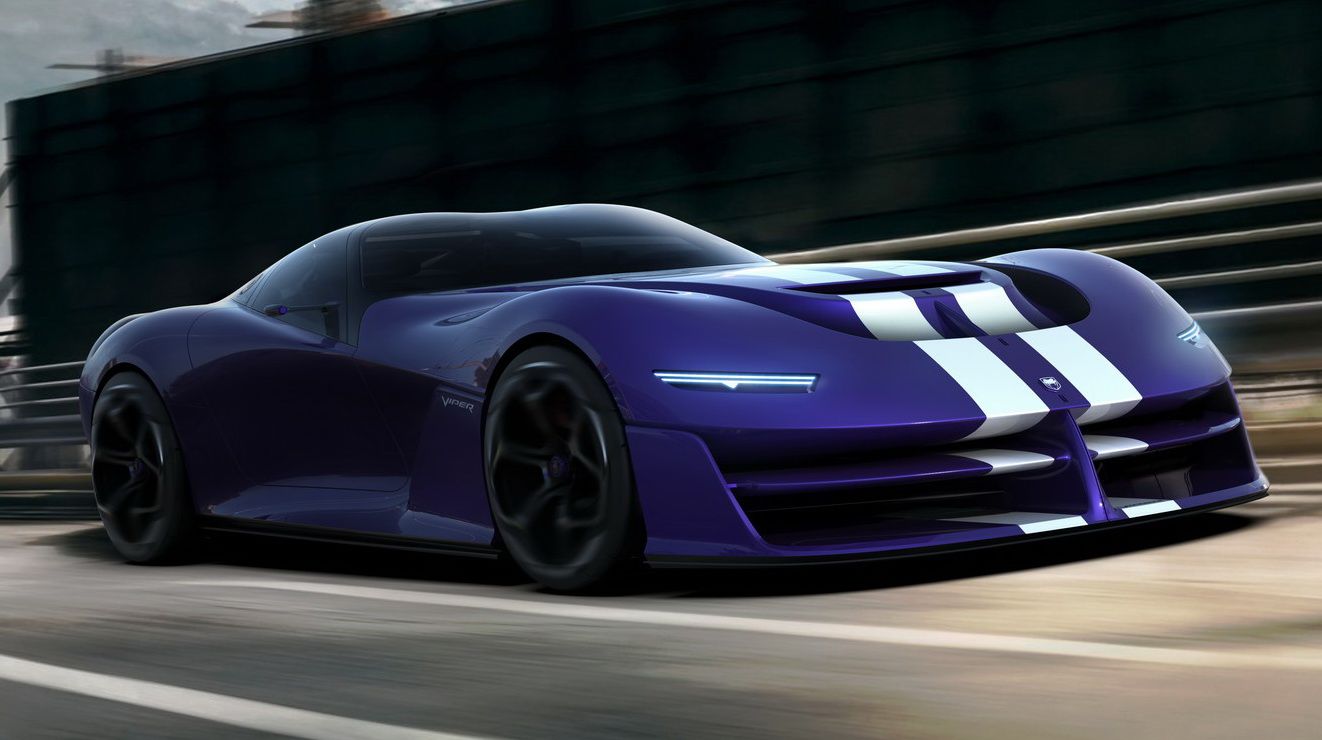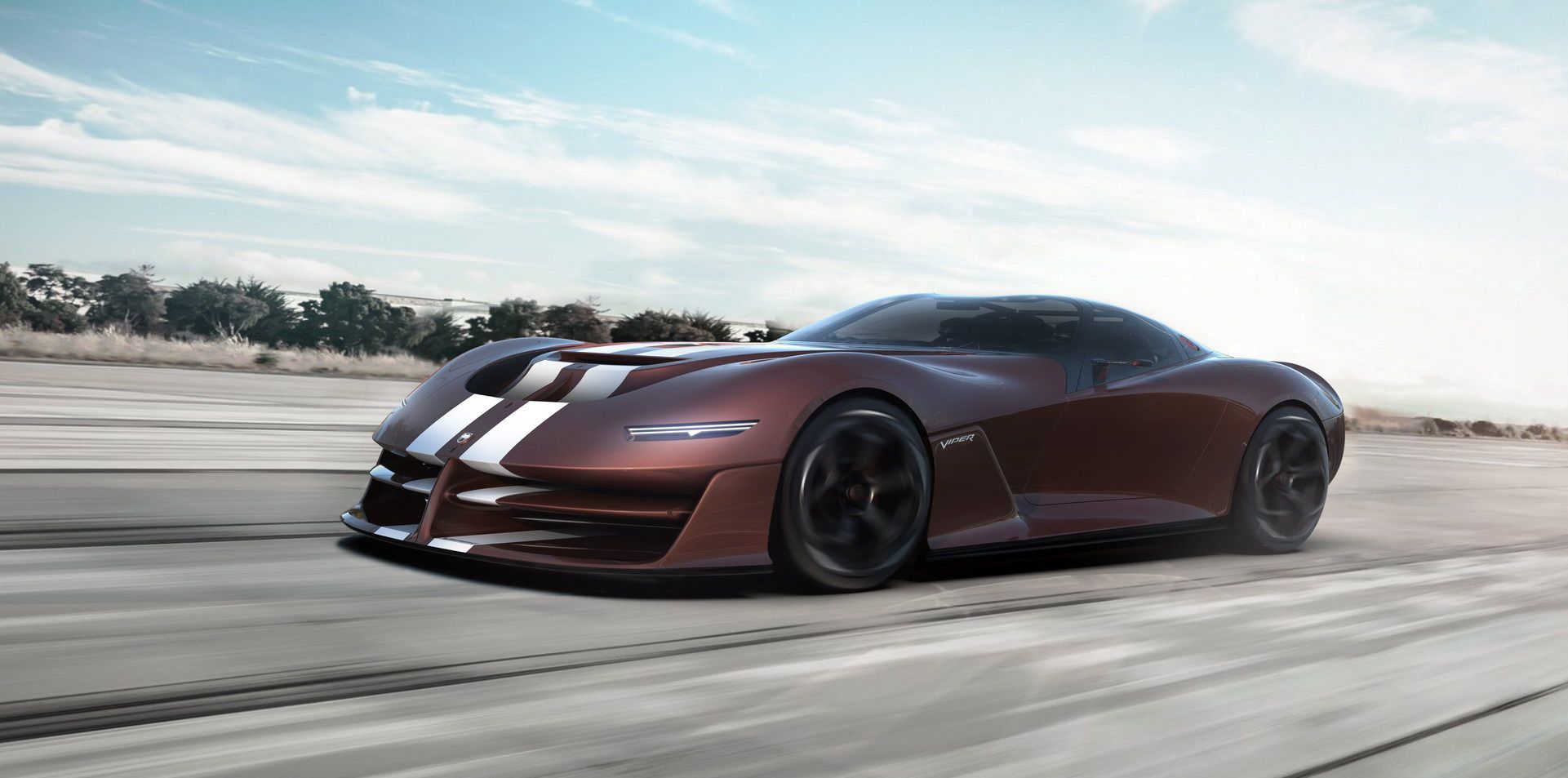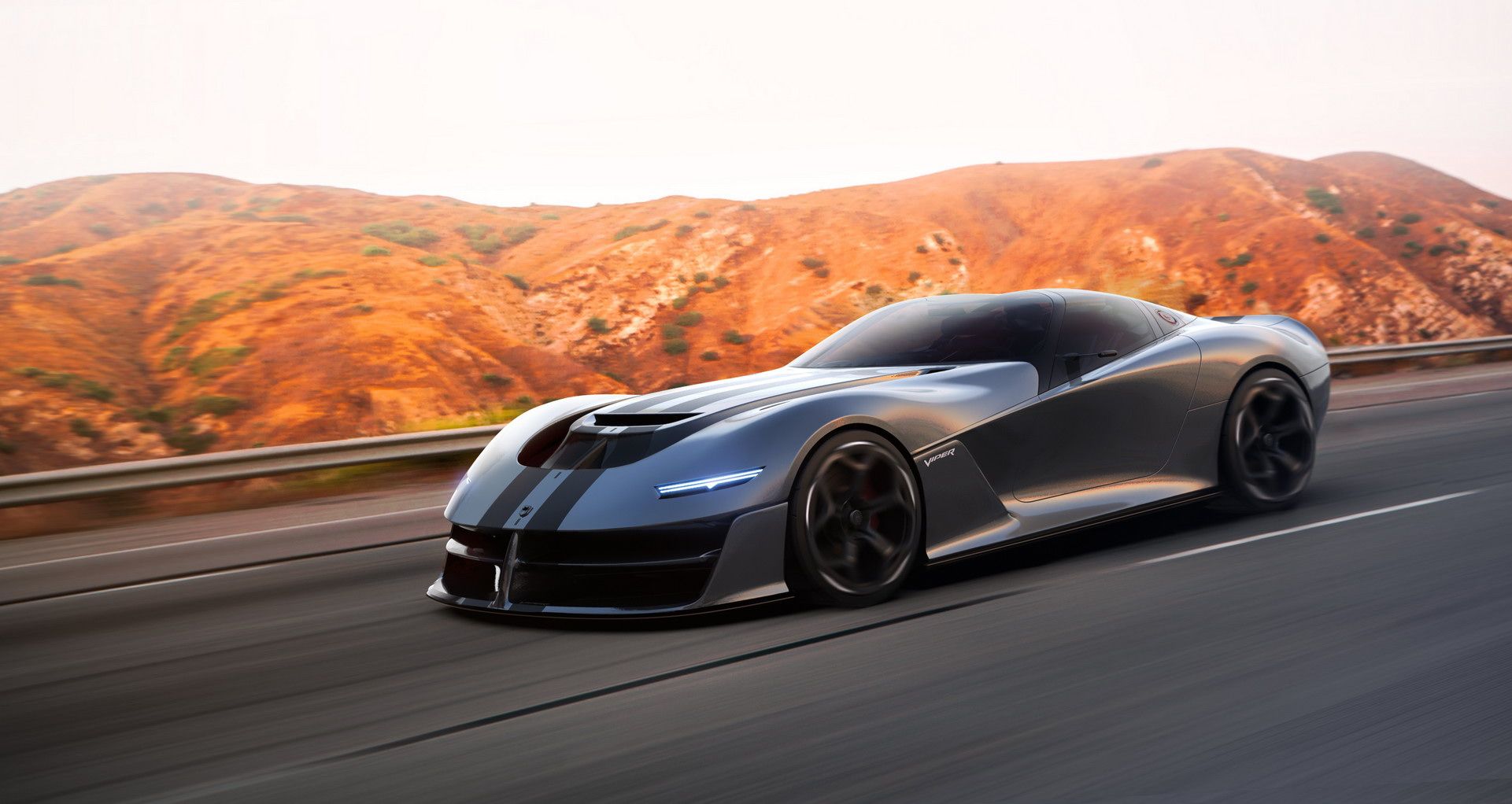It's been four years since Dodge discontinued the Viper and we're still hoping that the nameplate will return soon. The Viper was unlike any other American car. It featured a sleek and powerful design, a massive V-10 engine under the hood, and delivered outstanding performance on both the road and track. Dodge isn't planning on reviving it but the Viper is still getting a lot of love. And someone even went as far as to design a sixth-generation model from scratch. And it looks like a superb successor to Dodge's already iconic sports car.
Dubbed Viper Basilisk Concept, this virtual sixth-gen Viper is the work Guillaume Mazerolle. And this isn't just a futuristic take on the Viper. It's actually a well-designed concept that's deeply rooted in Viper generations from the past. The Basilisk Concept retains the sexy and organic proportions of the second generation model, particularly the GTS coupe, but it also borrows from the dynamic looks of the third-gen car. The design incorporates a handful of iconic Viper features, such as the "cross hair" front grille, the stretched headlamps, and the bulged hood. It also retains the deeply sculpted front fender areas, the muscular rear fenders, and the ducktail-style spoiler in the rear.
Mazerolle opted to use a race-inspired and vented engine hood, a lightbar instead of headlamps, a bigger diffuser, and a fully transparent roof, all of which add a new flavor to the Viper concept.
This thing looks ready to give the Aston Martin Vulcan a run for its money! The Viper Basilisk also retains the iconic V-10 engine, but it also features a pair of electric motors in the rear and a battery in the floor. Yes, the Viper's future, if there's any, must be related to electrification, but that's good news. With a big V-10 in the front and electric motors in the rear, the next-generation Viper could generate well in excess of 1,000 horsepower.
I certainly hope someone at Dodge or Stellantis is seeing this.
The Dodge Viper
The Dodge Viper debuted in 1992 as a two-door roadster. It was originally powered by a 8.0-liter V-10 engine derived from Chrysler's LA-type V-8. It was developed with help from Lamborghini, which was owned by the Chrysler Corporation at the time.
Dodge introduced a second-generation model in 1996, when the RT/10 Roadster was joined by a GTS coupe model. Output of the V-10 engine grew to 450 horsepower and 490 pound-feet of torque.
The Viper underwent a major redesign in 2002 for the third generation, when SRT stepped in to take over the project. A new SRT-10 model replaced both the RT/10 and GTS and engine displacement was increased to 8.3 liters. The V-10 was now rated at 500 horsepower and 425 pound-feet of twist.
A fourth-generation model followed in 2008, fitted with a 8.4-liter V-10 that developed 600 horsepower and 560 pound-feet of twist. Dodge also introduced the ACR, a lighter and more powerful variant, which set a new lap time on the Nurburgring. The fourth-gen model was discontinued in 2010, when Dodge dropped the nameplate altogether.
It wasn't the end of the Viper though. The sports car returned in 2013 with a more modern design. It continued to use the 8.4-liter V-10, but the mill was now just as powerful as in the previous ACR, generating 640 horsepower and 600 pound-feet of twist. The fifth-gen Viper spawned a new ACR version with 645 horsepower and a Time Attack (TA) model with an updated aero package. The Viper was eventually killed of in 2017. FCA cited poor sales as a reason, but the Viper was also unable to comply with new safety regulations.
2015 Dodge Viper SRT specifications
|
Type and Description |
10-cylinder, 90-degree V-type, liquid-cooled |
|---|---|
|
Displacement, liter (cu.in.) |
8.4 (512) |
|
Bore x Stroke |
4.055 x 3.96 (103 x 100.6) |
|
Flywheel |
Low-inertia aluminum with steel wear surface |
|
Intake |
Three-piece shell molded, vibration-welded composite for improved flow, reduced weight and improved thermal performance |
|
Valve System |
Overhead valve, variable-valve timing (VVT), 20 valves, roller-type hydraulic lifters |
|
Fuel Injection |
Sequential, multiport, electronic |
|
Construction |
Aluminum-alloy block with cast-iron liners, forged-aluminum pistons, forged-steel crankshaft, aluminum-alloy heads |
|
Compression Ratio |
10.2:1 |
|
Power (SAE net) |
645 HP @ 6,200 RPM |
|
Torque (SAE net) |
600 LB-FT @ 5,000 RPM |



